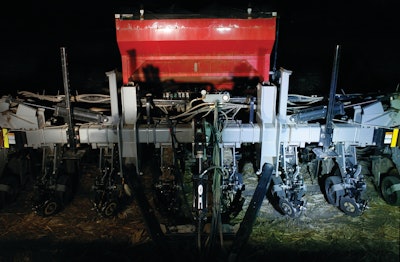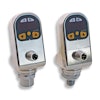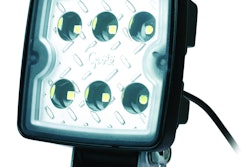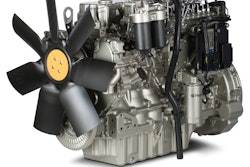
Work lights are often judged and purchased using criteria that differs from those used for other lamps. In fact, although the work light class of lamp is used in more critical situations than most other lamps, certain aspects relating to the light they produce is often overlooked by the organizations that adopt them.
Work crew efficiency using auxiliary lighting can be increased by using color temperatures that are most like actual sunlight. Color temperature, usually stated in the Kelvin temperature scale, describes the relationship of white light to the other colors in the color spectrum. Lower numbers are considered “warm,” and are good for creating a comfortable mood. Higher numbers, leaning towards the blue spectrum, are called “cool,” and are best for spotting detail or edge contrast.
As can be seen on a color temperature scale, light color ranges from 1000 Kelvin (k) reddish light, through general purpose incandescent light, to 5000k direct sunlight to a deeper blue in which distant and small details are more easily seen. The sweet spot for optimum work light is about 6500k. This combines the most natural light with a touch of blue spectrum so work crews can more easily focus on details without incurring eye strain.
Correctly selected LED diodes, such as the ones Grote uses for its Trilliant Cube 2500 and Oval lamps, operate at about 6,500k. Generally speaking, halogen lamps have a color temperature around 3500k and are warmer than most LED lamps, thus not as suitable for preventing eye strain. At 6500k, most people to do better and safer work over longer periods of time while experiencing less eye fatigue.
With an LED lamp, color temperature is controlled by the quality of the assembly process. LED manufacturers customarily produce LED diodes within a certain range of color temperature. For example, a specific LED manufacturer may produce diodes from 4000k to 7000k within a certain production batch. The next step is culling the production diode batch into Kelvin ranges—the narrower the range, the most precise and expensive the process. A narrower Kelvin range of LED diodes almost always indicates a higher quality supplier process—and produces better results when it comes to critical situation reliability and higher work crew efficiency.
The current marketplace features a wealth of different work lamp designs and a wide range of prices. It is easy to find an inexpensive LED work lamp that at first seems to replicate those from manufacturers that go the extra mile when it comes to performance characteristics. But many of these lamps do not live up to their advertised specifications. Lower quality materials, or cut production corners usually mean that these lamps do not provide the 50,000 hours of life that top-quality lamps do.
Just as important, their inferior internal circuitry, mismatched LED diodes and inadequate heat dissipation characteristics usually result in a lamp that eventually does not operate correctly or fails prematurely. Often this leads to unexpected and dangerous equipment failure at critical moments. Moreover, they often do not do not provide the eye strain protection and high efficiency necessary for day-to-day use.
To solve these issues, manufacturers or purchasing managers should choose LED lamps of the highest quality. When it comes to design sophistication, ruggedness both of structure and electronics, protection from voltage spikes and electromagnetic interference, lens design, mounting design, etc., there are significantly different levels of quality among various lamp designs and among suppliers themselves. The lamps may look the same but often they do not perform the same.
The quality of the LED diodes work lamps use varies tremendously and so do their life expectancy. Low quality LEDs fall out of spec more quickly and start to dim unevenly or just burn out. Also, the electronics within bargain lamps do not stand up as well to the vibration, corrosion and rigors of highway and work place environments, causing them to fail more quickly.
The best way to ensure a high level of performance and component longevity from a work lamp is to treat it as an investment, not only in the lamp but in the health and safety of an operator. Productivity of an operator depends in part on the quality of the lighting to avoide eye strain and eventual fatigue. Whether it’s a crop to be harvested or a road hazard that needs immediate fixing, having a lamp fail at a critical moment has a much greater downside than the short-term savings of an inferior quality lamp.


















